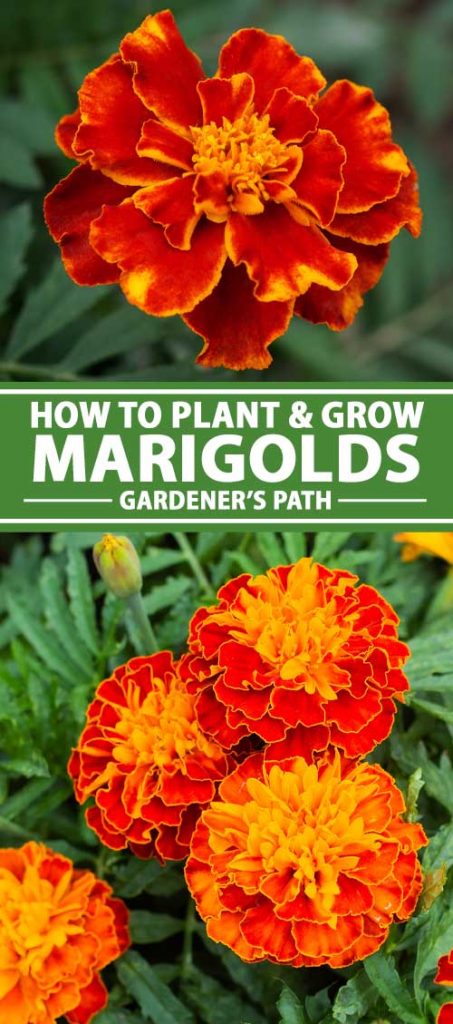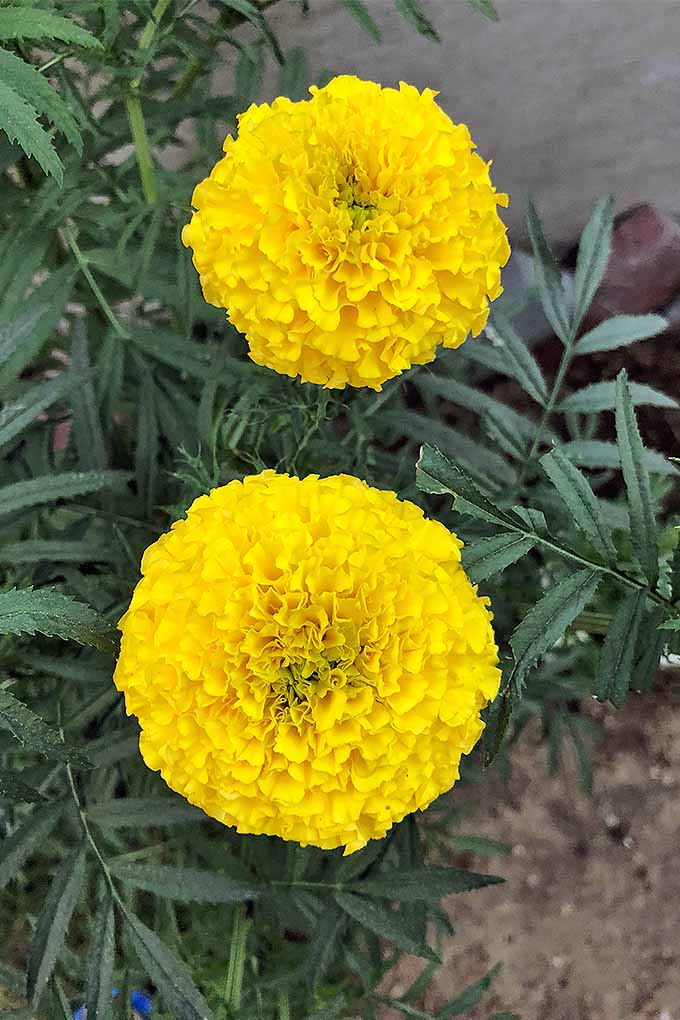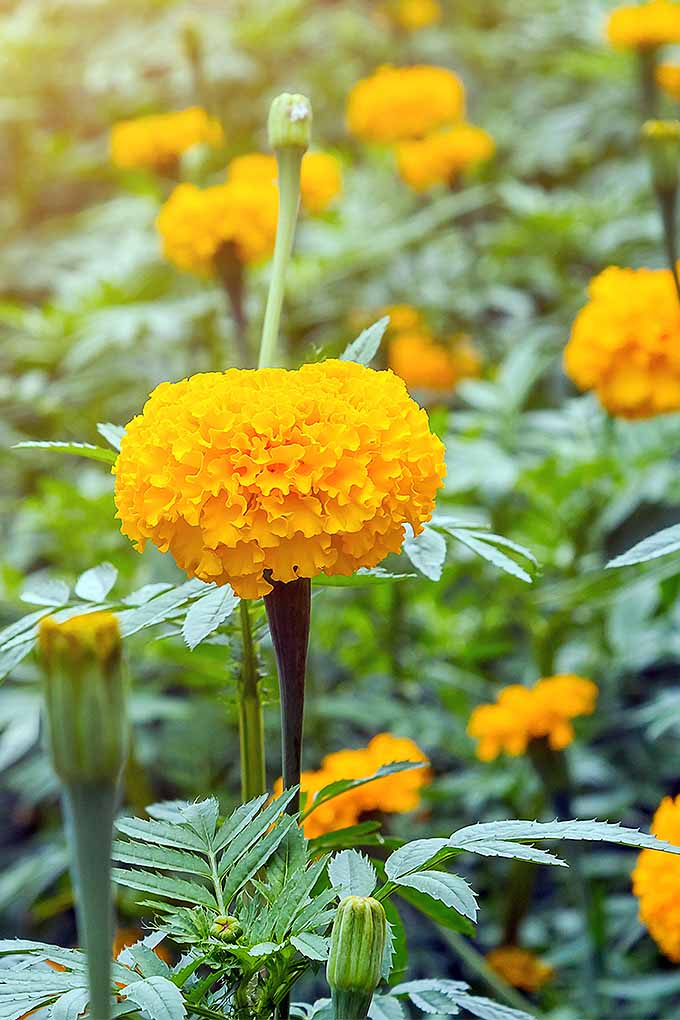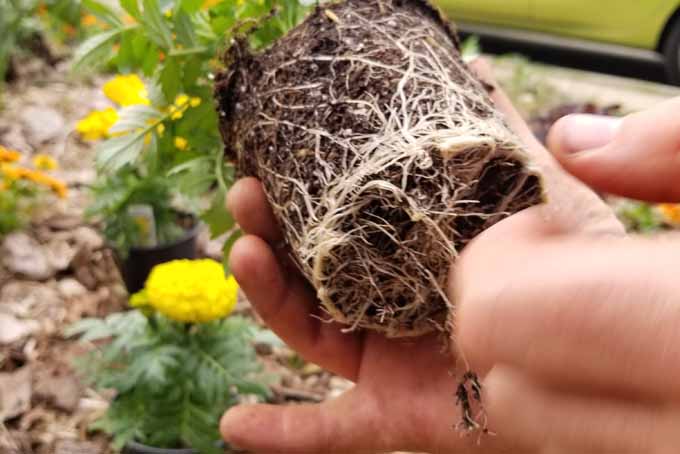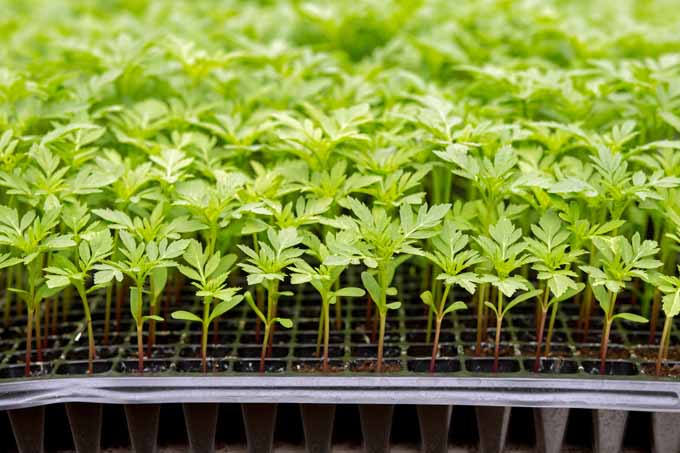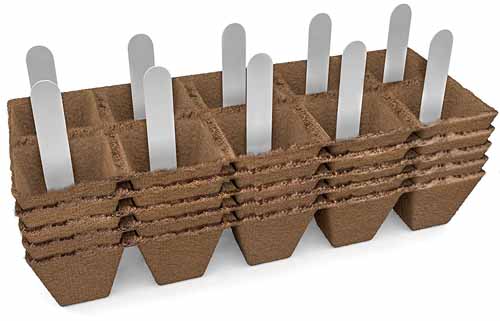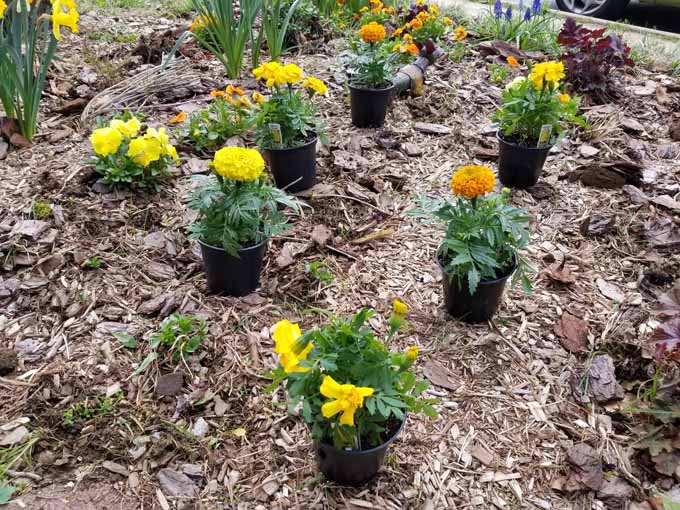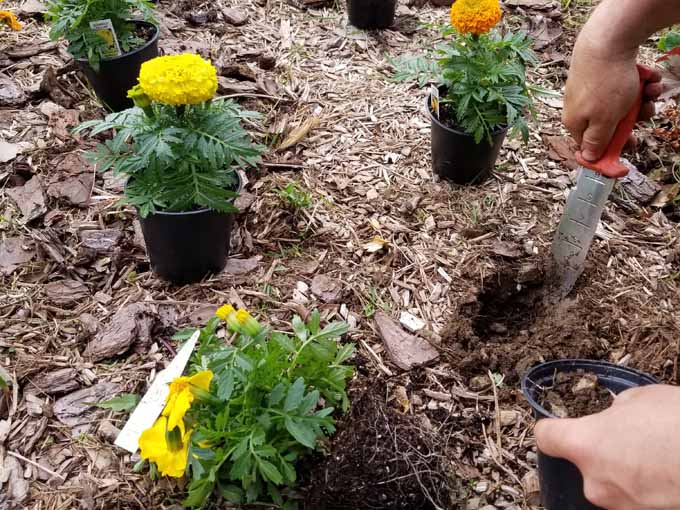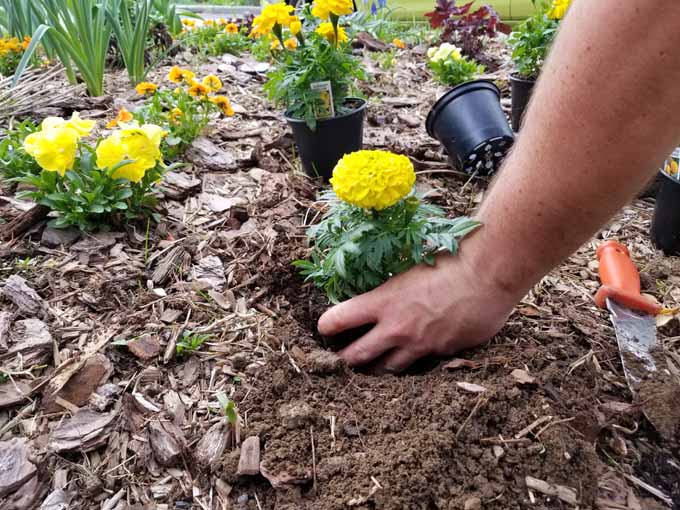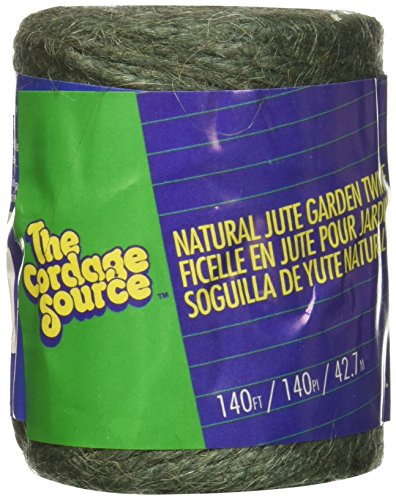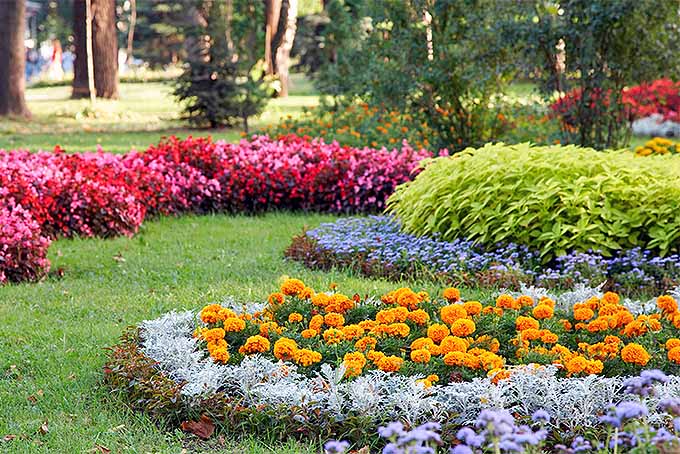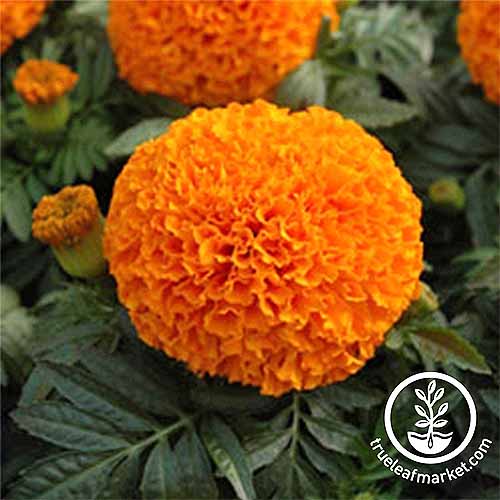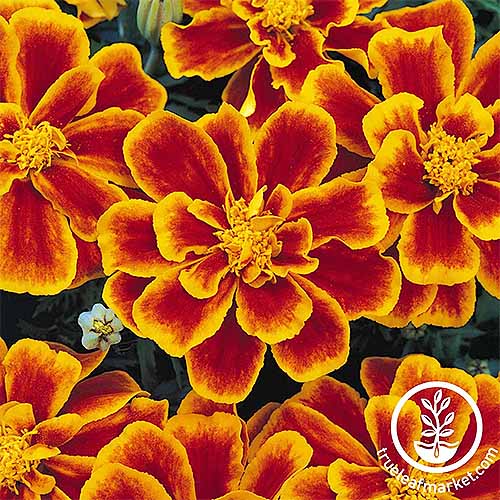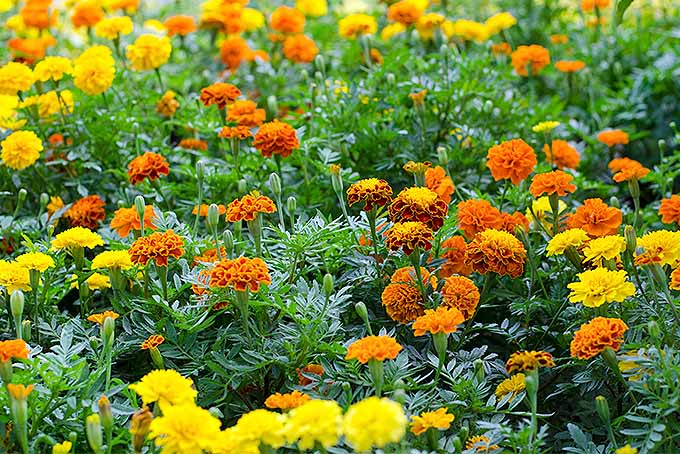I love marigolds, everything about them. So, if you were expecting an article about these annual flowers that’s written with journalistic detachment, you’re out of luck. This is my tribute to the peerless marigold, recognizing its great virtues and its hangups as well, with unabashed affection. We link to vendors to help you find relevant products. If you buy from one of our links, we may earn a commission. They are a surprisingly far-flung flower that has traveled across the Atlantic on multiple occasions. One variety of the flower is even fed to chickens so that egg yolks have a more perfect yellow color.
They might be a familiar sight, but marigolds have a few tricks available to them that can surprise even the most educated gardener. Grab your coffee or your tea, because we’re headed to marigold town! (That sounded a lot better in my head…)
History and Cultivation
I read a nice apocryphal tale about the origin of the flower’s name. The version of the story I read indicated that Mother Mary of the Christian tradition was robbed by bandits, but when they cut open her purse all that fell out were yellow flowers, something that would one day by named “marigold” (Mary’s gold) in her honor. But there’s a little hole in that story – and I’m not just talking about the one in the purse. The varieties we’re discussing today are botanically known as Tagetes and are indigenous to the Americas. Discovered in the 1500s in Central and South America, these flowers had great religious and social importance to the native peoples of the Americas, and they eventually crossed the Atlantic to Europe. Here, the story of Tagetes takes both directions at a fork in the road. Tagetes erecta, commonly known as the African marigold, made its way to France and North Africa. After a considerable length of time, the flowers naturalized to the environment of North Africa so that when European settlers visited the region, they assumed the flowers were African in origin. The French marigold, or Tagetes patula, had a similar journey. Their seeds crossed the ocean from the Americas with European explorers who were returning home. T. patula made its home in France and became a popular flower in the region, earning its common name. Both species then made another journey across the Atlantic and returned home to the Americas before becoming a popular and standard choice for North American gardeners. So what about that whole Mother Mary story? How could these flowers be something referenced in biblical tales if the Americas weren’t even discovered yet? Don’t worry, I did some digging on that, too. It seems that the European-originated species Calendula was likely the flower referenced here. Some species, such as Calendula officinalis, share similarities with our friend Tagetes, and even have a common nickname of marigold. In this case it is the pot marigold more specifically, and they were likely the flowers referenced in this tale. That was a fun line of questioning that led me down the marigold rabbit hole, but you’re probably ready to learn about generalized care for these classic flowers. Shall we?
Growing Tips
There’s a reason people have used these flowers as a garden staple for a very long time. Tolerant of heat, drought, and pests, the marigold is about as easy to care for as they come. They take off easily from seed, either grown indoors during the winter months or sown directly into the soil when it’s warmer out. You can plant them in almost any area that receives sufficient sun, and are an ideal choice when you’re planting with style. Marigolds are one of the best choices to use when you’re a free-spirited gardener who wants their plants to be happy. Better yet, Tagetes offers a slew of benefits for the rest of your garden. From deterring pests to attracting pollinators and desirable insects, and improving the soil quality, marigolds should find their way into your garden every year.
Water Requirements
In my book, the sign of a good flower is one that doesn’t require attentive watering. Tagetes fits this requirement pretty darn well. When first planting these guys, it’s best soak the soil thoroughly. This is standard practice with most plantings. Not only does it give the plant a nice drink to get started growing in its new home, it also helps to settle the freshly disturbed soil. Established plants don’t need much in the way of watering. In fact, unless the weather is unusually dry and hot, they don’t need anything besides a good soaking once a week. Rainfall is often enough for these tough flowers. Plants grown in containers are similarly tolerant of drought and only need to be watered when the top few inches of soil become dry to the touch. If the leaves start drooping, they’re in need of a drink sooner than later! Be mindful not to water marigolds from the top. If their blooms get too wet, they will often turn into a mushy brown mess. Marigolds can be susceptible to root rot as well, if they are over watered.
Sun Requirements
Native to sunny and warm climates, Tagetes prefer brightly sunny areas with moderately-rich soil. They can withstand full sun exposure with impressive grace and only begin to show signs of stress when the weather is relentlessly hot, be it humid or dry. This makes the marigold a perfect accompaniment to coreopsis, and pretty much every herb you can think of. Although capable of growing in a part-sun environment, marigolds will never shine in these conditions. In addition to developing weaker and less prolific blooms, when grown in the shade, they become susceptible to powdery mildew and a host of rots that affect buds and stems. If you’ve got marigolds in a container, consider moving the pots to provide a few hours of cover from the sun during the hottest periods of the summer. It isn’t necessary, but they’ll be happier for it. Keep a diligent eye out for spider mites when the weather is hot and dry, and look for little weblike buildups on plants to indicate their presence. Like many plants, marigolds are also susceptible to yellow aster. Unfortunately, there isn’t much you can do if you find this nasty ailment in your garden except to dispose of infected plants. In certain rare circumstances, your plants may fail to bloom. We have a troubleshooting guide for that.
Planting Tips
Planting marigolds is as easy as it gets. If you purchase your Tagetes from a retail store you’ll find a few options in plant size, but the process is always the same. Whether it’s a six-pack of marigolds, plants in four-inch containers, or a big bowl of half a dozen plants, you’ve got basically the same project on your hands. Keep in mind that most flowers sold in retail stores have been produced and grown under perfect conditions, so they likely have extensive root systems that are beginning to girdle the plant. Girdling is bad news! This is when a plant’s roots grow horizontally in a circle, and can result in dead plants. In both annual and perennial plants, girdled roots prevent the plant from ever grabbing a firm hold in the soil; they’re far more likely to die and “heave” out of the soil in this condition. In trees, girdling roots can be a major problem years down the road, as the roots practically strangle the tree. We’ll cover dealing with this much larger issue (for much larger plants) in another article. But for marigolds, what’s the solution? Rip those root balls apart when you’re planting! Yes, it’s stressful for the plant, but it will respond by establishing new roots and grabbing a firm foothold in its new home. Watering becomes easier, and after a brief breaking-in period, you’ll find the plants happier and healthier. This applies to marigolds, because they’re often grown in plastic containers that roots can’t break through. I find the best solution when planting almost any herbaceous plant, annual or perennial, is to simply rip of the bottom of the root ball. If the remaining roots are densely matted, you can scrape this up as well. Once the root ball is broken up a little bit, you can get to planting. To avoid additional undue stress, you can try planting on an overcast day. But I’ve found that a quick potting up with some adjustment to the roots can usually be done quickly enough that it won’t cause too much in the way of transplant shock. Marigolds are fairly resilient.
Starting From Seed?
No problem! I’d recommend purchasing your marigold seeds from a retailer, online or in person, rather than collecting your own. Many of the better performing and prettier cultivars are hybrids and they don’t grow as well in the 2nd generation.
If you’re sowing directly outdoors, bear in mind that you’ll likely see the marigolds choked out by other, faster growing weeds, and understand that your flowers will likely not reach their peak before the end of summer. If you want to have your marigolds at their prime size in time for mid-spring planting, start them indoors about fifty days before the last frost date. Sow the seeds in biodegradable seed starting trays and cover with a thin layer of vermiculite, perlite, or potting mix. The marigold seeds do not need sunlight to germinate, but they do benefit from a clear plastic lid acting as a greenhouse lid. The seedlings should germinate about a few days, at which point they should start receiving about six hours of light a day. Keep an eye on them and thin the seedlings once they start producing a second set of leaves. After you’ve thinned the marigold seedlings you can transplant each soon-to-be flower into its own pot and keep them waiting inside until your last frost date!
Lay Out Your Plants
I’m terrible with this aspect of planting, but it’s mighty important to the long-term appeal and composition of your flowers. Plop individual plants where you want them to go,preferably while they’re still in their nursery pots, to avoid prolonged root exposure. Space them according to the information on their tags, and step back to look at the setup. It’s a lot easier to make changes at this stage, instead of when the plants are already in the ground. Consider the height the plants will reach at maturity, their spread, and their proximity to bedlines and other potential dangers, like a stray mower wheel or a string trimmer on weed patrol.
Dig the Holes
If your soil isn’t too dense, the planting hole only needs to be about 10% larger than the root ball, just enough to backfill some soil. On the other hand, if your soil is dense and heavy (think clay), you’ll want to dig a hole that’s wider and deeper than the root ball by about 50%.
Plop ‘Em In
Break the soil up and backfill around the marigold, being careful not to damage too many leaves around the plant. I’ve always planted with the root ball just sticking above the soil grade, maybe half an inch higher than the rest of the surrounding soil. This prevents wet feet, but it also accounts for the eventual settling of the soil that will occur.
Cover and Conceal
Settling and finishing the planting area is my favorite part of planting, except for the part when I finish the job and get to sit back and appreciate my work with a beer in hand. The greatest advice I ever heard regarding design and composition in the garden is, “make it look like it’s always been there,” and that’s our goal when planting marigolds. Smooth out the soil surrounding the plants, round out rough edges, and “tilt” the plants a little in their holes. Half a dozen arrow-straight marigolds sure look nice, but freshly planted flowers are almost always so obvious.That’s not bad in and of itself, and many gardeners love that fresh, manicured look. But if you want something more flowing and natural, consider the following: You can tilt the root balls once they’re planted and before patting down the soil to avoid a repetitive unnatural grouping of plants that are standing straight up like soldiers. With shorter French varieties, I’ll tilt the plants about 20 degrees so they’re facing forward, or whatever direction I want them to face. When you’re finished planting, give your new transplants a nice drink of water, then check on them in the next day or two to see if they need more. It only takes 1-2 weeks for the marigolds to start setting roots and becoming established, eliminating the need for watering except during droughts. These taller flowers may require staking to prevent the stems from bending and breaking under the weight of the flowers. Use dyed green bamboo stakes and some green jute twine https://www.amazon.com/Cordage-Source-1006G-Twine-140-Feet/dp/B000FP8HIM to offer your taller marigolds whatever support they need. I like using my trusty pruners to cut the top portions of the bamboo stakes away to just below the height of the top flower of a marigold, effectively hiding the presence of these stakes in the garden.
Layer In Some Mulch and Water
A light dressing of mulch will help the marigolds conserve water and makes for a neater planting area. You will only need a light application of mulch “for color” for this, not the inches of mulch used in vacant planting beds.
Companion Planting
It’s difficult to find places where Tagetes is unwelcome. The flower’s scent seems to deter nasty bugs and pests that would otherwise be ready to start munching down on your other tasty plants that are growing in the garden. Additionally, the roots have been shown to deter nematodes for up to a year. I’ve seen other gardeners plant them when rotating their crops, to ensure healthier soil. Ideal as a companion plant, the marigold often is planted as a border or buffer around a garden, since the pungent scent is so offensive to pests. From yours truly over here, I think marigolds smell like summer, but to each their own. I’ve specifically planted marigolds with petunias, alyssum, dahlias, and another favorite of mine, chamomile. Tomatoes get along especially well with them. Try combining marigolds, tomatoes, basil, and alyssum in a planting. It looks nice and the plants seem to enjoy teaming up together. There’s enough variety in these choices to make some pretty stunning and edible combinations. Just make sure you refer to it as “Mad Man Matt’s Plantastic Arrangement” when your family and friends ask about it. Read more about using marigolds to help with pest control.
Ready, Set, Grow!
They’re everywhere and are among the most recognizable flowers in the garden, but marigolds have to cheat to earn this reputation. They’re vigorous growers that require little care and are happy to deter pests and improve soil health, all while putting on a great show of color through the entire summer.
African (or American)
Reaching heights of up to 4 or 5 feet and topped with massive pom-pom flower heads, Tagetes erecta can be a bit of a bully in some plantings. It wants to grow wildly and will knock over other plants to achieve this. T. erecta can be especially demanding of space in containers. Still, it’s my favorite variant. The giant blooms are a sampling of delightful and cheery yellows and oranges that look like they’re straight from a big ol’ box of Crayola crayons. They might require staking if they get too tall, but that’s alright. You can always spot my home by the wall of marigolds I’ve got growing in the front yard. Moonsong Deep Orange has a deeply saturated color to its bloom that borders on the profuse.
Moonsong Deep Orange Seeds, available from True Leaf Market I like this variety because it exhibits a restrained and rich color that nicely accents the other brighter shades of different cultivars. This type will grow to be about a foot high and about a foot wide. Vanilla is my go-to choice when I want a white colored flower that pairs well with zinnias. I’ve got a major soft spot for white and yellow flowers, and the delightfully creamy texture of this one finds me ordering seeds on a regular basis.
Vanilla Marigold Seeds, available on True Leaf Market This variety will grow to reach about eighteen inches in height and sheds water from its flowerheads more easily than other African marigolds. Antigua is a must in any discussion of this flower. Easy-to-grow and providing a nice range of colors, the Antigua series is probably what comes to mind when people imagine these blooms.
Antigua Series Flower Seeds, available from True Leaf Market Expect tons of flowers and a height reaching between one and two feet. Find more tips on growing African marigolds here.
French
With a daintier and more compact flower, Tagetes patula has the added benefit of possessing multicolored flowerheads that its taller cousin cannot produce. The French variety tends to be a bit more tame and comes in at a shorter stature. I like to plant the French types with my vegetables because they don’t get as pushy as T. erecta, and offer a nice combination of color that matches my tomatoes and cucumbers. If purchased from a garden center they tend to be sold in eight-packs, my choice for best-bang-for-your-buck when buying live plants. Durango offers intense colors with a warm orangish-red center outlined in a softer orange.
Durango Series, available from True Leaf Market They’ll grow to be about a foot in height, so I don’t use them as often as other T. patula species, but their color really is something else. Bonanza is a good choice to use for edging your vegetable garden or for other borders.
Bonanza Series Seeds, available from True Leaf Market Although it could potentially reach a height of six to twelve inches, it is best utilized for its spread of one to two feet. That’s a lotta flowers! Disco is a “look at me, look at me!” kind of marigold, and I can dig that.
Disco Series Seeds, available from True Leaf Market Reaching about a foot in height, this is a carefree flower that wants to be left alone so it can spread out and put on one hell of a show. Petite would be my marigold of choice when used as a companion plant. It maintains good-sized flowerheads but rarely stretches to a height of more than six inches.
Petite Mixture Marigold Seeds, available from True Leaf Market You get all of the benefits that you’re looking for with this type of flower, with little of the vigorous competitiveness found in some other varieties. Find more tips on growing French marigolds here.
Signet (Tagetes tenuifolia)
T. tenuifolia is not commonly planted because it tends to grow obnoxiously. It will reach places you never intended and fight like a scrappy junkyard dog to hold onto its territory. For that reason, I don’t use them often in my plantings. But if you’ve got the room for it, we have a reasonably tame variety to introduce to your home and garden: The Gem series offers a relatively compact habit and is an edible flower, so that’s pretty cool.
Signata Gem Series, available at True Leaf Market A coworker plants the Gem series with nasturtium and sits back to enjoy the competition each plant offers. Find more tips on growing signet marigolds here. Find the perfect color combinations and growing habits for your garden or flower beds in our supplemental guide, “31 of the Best Types of Marigolds.” They’re also easily grown from seed! You can direct sow them into the ground, or start them indoors a few weeks before the end of winter. Planting these seeds is a great project for young and inexperienced gardeners, especially children, to get started on their green thumb early.
For the experienced gardener, a marigold offers an easy win and reliable performance that can be counted on year after year. Start seeds indoors about six to eight weeks before the last freeze and transplant those beauties right into the ground for fast satisfaction and a headstart on your neighbors. And for more tips on growing edible flowers, be sure to check out some of these selections:
How to Grow Common Chicory Growing Plumeria: How to Care for Frangipani How to Grow Pansies and Violas for Multi-Season Color

